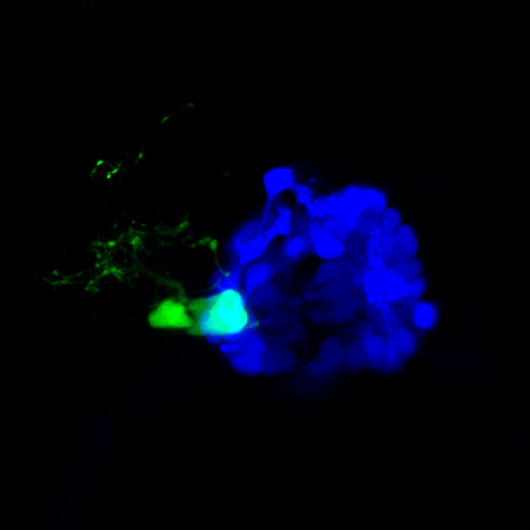Brains Wired to Tell Left from Right

Show me your left hand. No, your other left hand.
A lot of us have had those moments when we can't quickly tell left from right, but a new study suggests our brain is hard-wired to tell the difference, down to the level of the cells.
The left and right sides of the brain differ in many animal species. This is thought to influence cognitive performance and social behavior. For instance, in humans, the left half of the brain is concerned with language processing whereas the right side is better at comprehending musical melody.
Now, Stephen Wilson and his colleagues at the University College London have pinpointed for the first time how the left and right sides of our brains are wired at the level of individual cells. The results are detailed in the journal Neural Development.
Wilson looked at left- and right-sided neurons (nerve cells that manage information in the mind) in a part of the brain called the habenula. He isolated these neurons in zebrafish. For this part of the brain, zebrafish are thought to be a good model for human brains.
By causing habenular neurons to produce a bright green fluorescent protein, Wilson's team saw that the neurons form remarkable "spiral-shaped" axons, the long nerve fibers that act as the nervous system's transmission lines.
"It's clear that the left and right halves of the brain process different types of information, but almost nothing is known about the differences in the brain's circuitry which achieve this," Wilson said. "One possibility is that totally different types of neuron might be found on the left and right. Alternatively, both sides could contain the same building blocks but put them together in different ways."
Sign up for the Live Science daily newsletter now
Get the world’s most fascinating discoveries delivered straight to your inbox.
The researchers saw that there are two types of habenular neuron, and both types can be found on both left and right sides. However, while most left-sided cells have spiral axons shaped into a domed crown, such neurons are not very common on the right. Instead, most right-sided cells form flat, shallow spirals, and these are formed only occasionally on the left.
"In the same way that an engineer can make different electronic circuits from the same set of electronic components, so the left and right halves of the brain use the same types of neuron but in different combinations," said Wilson's colleague Isaac Bianco, a UCL student who did this work as part of his Ph.D. research.
The left and right habenular circuits both connect to the same part of the brain, and the researchers found that this target can either combine signals from the left and right or handle them independently.
"Even though language is processed largely on the left side of the human brain, people don't speak with only one half of their mouth. The brain must contain circuits which take information from the left or right and then send it on to targets on both sides of the body," Wilson said.
- Video: Brain-healing Nanotechnology
- Top 10 Mysteries of the Mind
- Body Quiz: The Parts List










